While I can’t believe it’s true, my two little ones would be what many would consider preschool age. This Fall they will be 2.5 and 4 years old. When my older two were that age I began researching homeschooling methods and got really excited about our future lifestyle of home education. I was tempted to decorate my house like a preschool classroom and start teaching how to read and write! Thankfully I read a lot of inspiring information about delaying formal education and decided early on that we wouldn’t push academics in those early years. I also learned that I didn’t need our home to ever look like or feel like a classroom. I realized there were much more important things to focus on in the ages between 2-6. This blog post will share what those areas of focus are for our family.
Related: Our Homeschool Preschool Daily Rhythm and Homeschool Kindergarten: Daily Rhythm, Schedule, and Curriculum
Now that we have four children and two are of formal schooling age, things look quite different in our home than when we only had preschoolers. Rather than having full days with the little ones as the focal point of attention, I have to prioritize the needs of everyone. It has been a tricky adjustment, but keeping these five main intentions in mind for the early years really helps me evaluate if they are getting the childhood that I believe is best for them and that prepares them for the formal schooling years later.
I have found that while these intentions don’t require a curriculum or anything structured, they do require creating an atmosphere in our home and family culture that makes space for these intentions to be a part of our regular daily rhythm and life. If you are curious about what I do about academics, like letters and numbers, I share that at the end of this post.
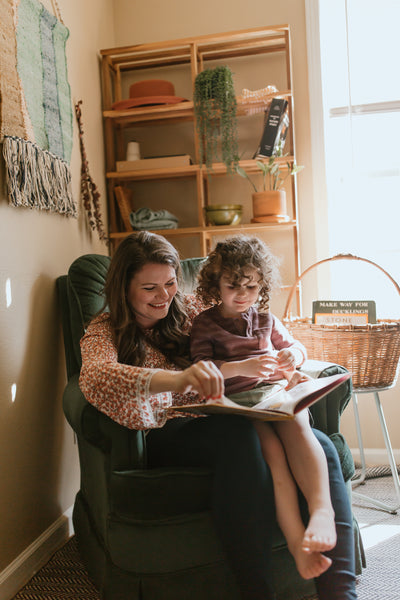
Intention #1: Fostering a deep love for living literature
This is central to so much of our lifestyle. I learned early on that books and stories were going to be a huge part of our life as a homeschooling family. I knew that I wanted to start training my eye to find quality living books and get as many rich stories in front of my children as possible, starting at an early age. Let me say this more clearly- reading aloud to our children early and often is so important, but what we are reading to them is equally as important.
What is a living book? While the definition may vary from person to person, this is what I believe to be true about living books. A living book is one that leaves the reader/ listener inspired and draws them into curiosity and imagination. Living books are often written by someone who has imagined or experienced the content of the story first-hand. If the book is factual in content, the facts are presented in such a way that the reader feels as though they are “in” the story.
An example- It is Autumn and you want to read books to your children about apples. You could read science books that tell facts about apples to your child in plain language, books that read like textbooks. Or you could read a story of a child who goes apple picking with their grandfather and comes home to make apple pie. In the process, she learns about the apple's life cycle and the parts of the apple. (and so does your child as you read) Which would be more memorable to your child? More enjoyable to read? Which would cause your child to want to experience apple picking for themselves? That one is likely a living book.
FREE Download: 100 Living Picture Books for the Early Years
How we implement this:
Reading aloud
I make it a priority to read at least 3-5 living books aloud every day to my little ones. Our afternoon nanny also reads a lot to them. I keep books in nearly every room of our house to make books easy to grab at any time. In order to ensure we get this time, I also schedule reading to them into our daily rhythm.
Audiobooks, podcasts, and read along books
Starting around age 2, my children listen to stories for hours each day. This is usually in the car, while they eat, or while they play with things like play-dough or magnatiles. As they get older, they learn to follow along in books which I have seen really help in their early desire and ability to read.
Our most used resources for this are audiobooks through free library apps such as Hoopla. Next in line would be story podcasts. Check out this post and this post for my favorite story podcasts. Read Along books take more practice and we begin those around age 3-4. These are either books with coordinating CDs (yes, we have an old-school CD player) or more recently I have discovered Wonderbooks, which have the audio embedded in them and are a complete game changer. Again, I don’t purchase these, they are available at my library. There are other ways to listen to stories, one I have seen grow very popular lately, but we haven’t tried yet is the Yoto Player.
Book club play dates
I have yet to do this with my second set of littles but when my older two were preschool age I started a preschool book club with some friends. We would choose one picture book and read it to our children and then gather to “celebrate” the book with activities, snacks, and games. Talk about helping children fall in love with literature! Here is an example when we did the book “Go Dog Go” by P.D. Eastman. This idea grew into early chapter books over time.
Related: How to Start a Children’s Book Club
Play-based narration
Narration is at the core of a Charlotte Mason education. I decided early on that I would start practicing this skill with my little ones in a gentle way before formal lessons to prepare them. To encourage this, I read good literature and then offer “props” for them to play the story.
Related: Narration in the Early Stages

Intention #2: Encouraging unstructured, creative play
It seems obvious to some that prioritizing play is an important element to the early years, but it really is the type of play that matters. All children play, but the type of toys and their environment will deeply impact the type of play they engage in, which in turn affects their development, imagination, critical thinking skills, and more. In our home, the goal is lots and lots of unstructured and creative play in the early years. Here are the three main things I focus on to achieve that.
How we implement this:
Margin in our schedule
Children need lots of time to be bored to encourage imaginative play. What this looks like for us is me not entertaining them, under-scheduling our days, and giving them lots of free time. Not only do I not over-schedule my little ones with programs and plans- but I also don’t over-schedule my older children so we don’t find ourselves running around in the car every day. As far as not entertaining them, what I mean is that while I do set the environment and offer ideas throughout the day, I don’t have activities planned out for them very often at all. I will jump in and help get their creativity going, but then I walk away and encourage their own creativity to keep the play going.
Minimal screen time
While I am not 100% anti-screens, I do believe that too much time watching shows and playing games on screens affects their imaginations and ability to be creative. For that reason, we are very minimal with screen time to give all of our children the time and ability to play creatively. When they do have screentime, we opt for slow-moving shows like Little Bear or these Scholastic Storybook Treasures. (It’s a bonus if the show connects back to the literature to reinforce that connection and love of books!)
Open-ended toys
The next piece of this is which toys we offer them. Open-ended toys are toys that allow children to express themselves freely and creatively. They encourage the type of play where there are no rules to follow and no pressure to produce a specific finished product. We have a minimal amount of toys and avoid any toys that tell the child exactly how to play with them. Aside from toys, we keep a lot of “loose part” type of objects around for creative, imaginative play- craft supplies like clay and paint, cardboard boxes, sticks, rocks.
Related: Open-Ended Play Must Haves
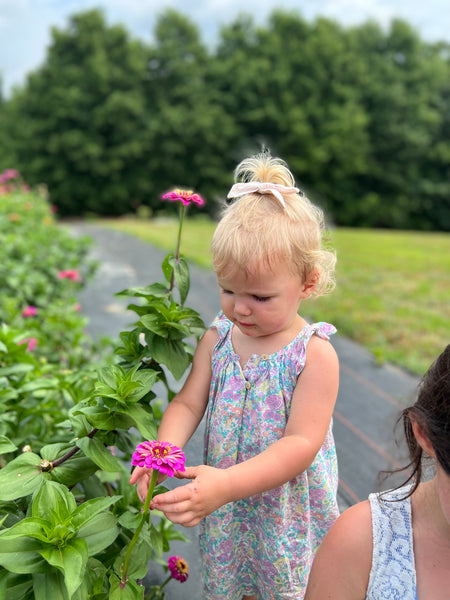
Intention #3: Intentional training in obedience and attention
I always say that homeschooling is an extension of parenting. I believe that before children are of formal schooling age, we need to get them ready to listen and follow instructions from us as their parents. We need to build that trust relationship where they heed our direction “right away, and all the way” (a phrase we use in our home to define obedience). In our home, we start working on training in obedience at a very early age.
The main idea of fostering the habit of attention is that we want children to be trained in slowing down their thoughts and bodies enough to focus on the task at hand, the story being read to them, or the details in life. This sets children up for so much when they get to formal schooling age. Our culture is so fast-paced and does not lend itself well to this habit without parents being intentional.
How we implement this:
Clear direction and consistent follow-through
The best way to set our children up to succeed in obedience is by giving clear directions and coming alongside them to help them obey the directions given. We show and tell them exactly what is expected of them and make sure it’s attainable before holding them accountable to it. Once we know that they understand and are able to follow instructions, they will receive correction and discipline for choosing not to obey.
Even as they get older, I try to only give my children the number of tasks at one time that I know they can handle. Then, I do my best to follow up with the tasks and correct them if it is unfinished or praise them for finishing them. When we “rapid fire” our children with instructions, we overwhelm them and they give up trying to focus on what they were asked to do. When we don’t follow up with what we asked of them, we communicate that it doesn’t matter if they pay attention anyway.
Keeping toys to a minimum
The habit of attention is attained by children by slowing down their minds and really focusing on one thing at a time. When children have too many options in their environment, it makes it a challenge to focus on anything. Even if you own a lot of toys, implementing a rotation system to offer less at a time can help a lot. We keep only 2-3 toy category options at a time in the area they are playing.
Modeling attention to detail and inviting them in- This is especially easy to do while outside, but there are opportunities everywhere. When we are playing outside or going on a nature walk, I try to be intentional to slow down and point out details in nature. I encourage them to lay on their bellies and watch a worm for as long as they would like. I am intentional to let them see me enjoying the details in creation, like how tiny the seeds of a strawberry are or how the center of an apple is shaped like a star when cut horizontally.

Intention #4: Opportunities to learn practical life skills
Learning skills like cooking, gardening, household chores, and caring for their environment strengthen children’s habits of attention and are a great opportunity to develop motor control and coordination, independence, concentration, and a sense of responsibility. My favorite reason of all to give children these opportunities is for relationship building. We spend so much time baking and doing everyday chores together when they are little and those moments are some of my favorite memories!
How we implement this:
Daily chores

Young children love to feel capable and independent. We start giving our children chores using these chore charts when they are around age 3. We complete tasks together and they get to check them off the list using a dry erase marker. Some chores I may put on my children’s lists between ages 2-5 are to get dressed, wipe the table, or make their bed. Along with this, I invite my little ones into my chores on a daily basis. They help switch laundry, empty bathroom trash cans, sweep, and unload dishes. It often takes more effort to have a “helper,” but it is worth it when you think of what it is doing for their development.
Cooking together
Every opportunity I get, I invite my little ones into the kitchen with me to crack eggs, stir, pour, measure, and even chop using these knives.
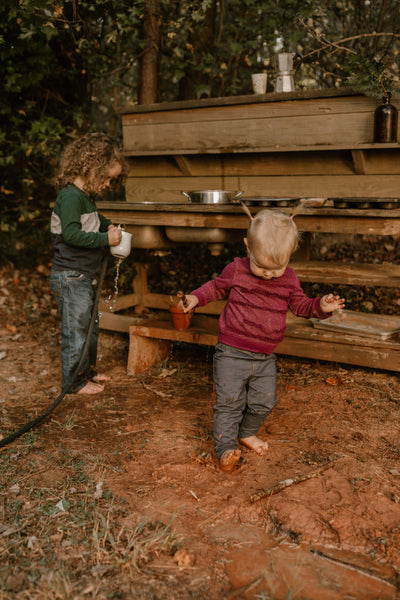
Intention #5: Time and space for exploration and experiences in the outdoors
“In this time of extraordinary pressure, educational and social, perhaps a mother’s first duty to her children is to secure for them a quiet and growing time, a full six years of passive receptive life, the waking part of it for the most part spent out in the fresh air.” - Charlotte Mason
Giving young children ample amounts of time outside is a top priority for me. I could talk for hours about the benefits of outdoor play for children, but here are a couple. As mentioned above, time in nature helps develop the habit of attention when they study a leaf closely or crouch down to watch a bug walk along. As children play in an unstructured environment in nature, their muscles of creativity and problem solving are being strengthened. When possible, I aim for 4 or more hours each day of unstructured outside exploration for all of my children. Depending on the weather and circumstances, that is not always possible, but it is a goal.
How we implement this
It can be tricky to fit in hours upon hours of time in nature along with homeschooling the older children and all the other responsibilities that come along with caring for a home. I have found that having a safe outdoor space for the little ones to go out without me right there with them, but within my sight/hearing range is essential. It doesn’t have to be fancy or large, but somewhere safe that they can get that unstructured play in while I finish the dishes or read aloud has been perfect. For us, it is right outside our back door and fenced in. We have a simple sandbox, mud kitchen, and tree fort area that the little ones can play in all day. On top of this, we often spend afternoons or evenings on hikes or in the woods behind our house. Every Friday, we spend the entire morning out in nature with friends from our Wild + Free group.

What about academics?
Our family has chosen to delay formal education until around age six.
Related: My Favorite Blogs, Podcasts, and Books for the Homeschool Mama.
Delaying formal academics doesn’t mean delaying learning, it just means that we allow our children to learn in a way that’s natural and organic until that age. There are many ways we can facilitate learning the alphabet, numbers, and many other subjects for young children even if we are not yet schooling them. Some of those ways are exploring a moveable alphabet, counting as you skip rocks or crack eggs, and reading living books about a variety of subjects! We also do puzzles, watercolor, play board games, and just simply talk about everything they are experiencing. During all of this, they are learning!
While not necessary, following a guide to help you naturally invite your children into learning can be fun and helpful. If you would like to use a curriculum for preschool, I recommend one that prioritizes these intentions I shared in this post and anything “academic” such as numbers and letters is gentle and inviting, not rigorous. My favorite preschool curriculum is The Peaceful Preschool by The Peaceful Press. We used it twice with my older children and loved it.
Related: Read my review of The Peaceful Preschool I wrote a few years ago.

The Wonder of Nature Collection was designed to offer young children a multi-sensory invitation to recognizing, forming, and writing letters. The watercolor illustrations that coordinate with each letter of the alphabet teach early phonetic awareness by introducing them to beginning letter sounds. Slide these sheets into a restaurant menu cover or into dry-erase pouches so that your child can practice them again and again. Use dry-erase markers and wipe clean after each use.
Related: Hands-on Letter Recognition & Formation Strategies
Another good option, especially if you also have older children, is a family-style curriculum such as Treehouse Nature Study. Now that I am doing formal schooling with my older two children ages 7 and 9, I don’t use a separate preschool curriculum for my 2- and 4-year-olds this year. Instead, I pull them into our lessons with Treehouse Nature Study.
Related: How to Use Treehouse Nature Study for Preschool-Kindergarten

Along with these lessons as a gentle invitation, we use the Preschool Morning Time Bundle as a gentle invitation. I find that those things and the intentions in this post are more than enough for these early years. I hope this post gave you some direction or assurance and answered some of your questions about the preschool years! Don't forget to grab your free Early Years book list below.



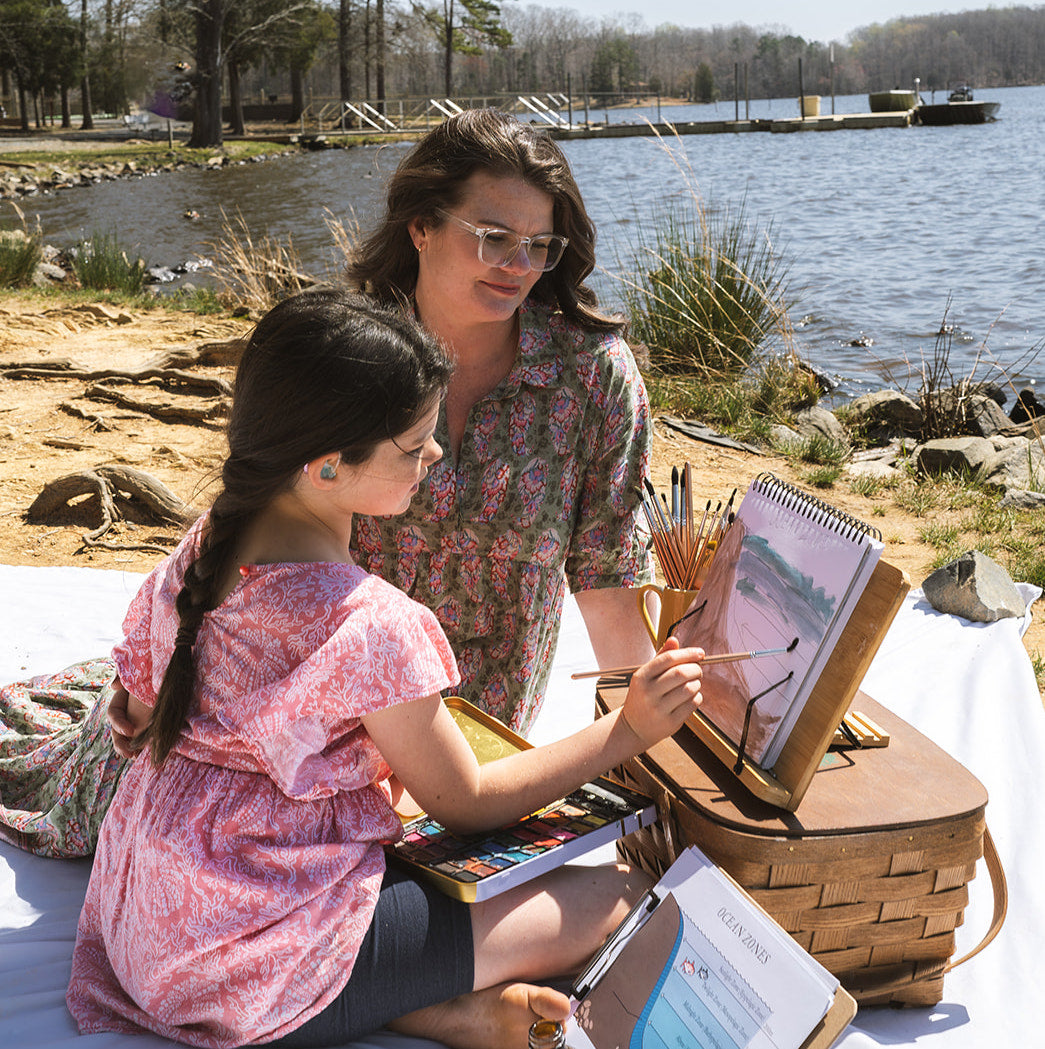
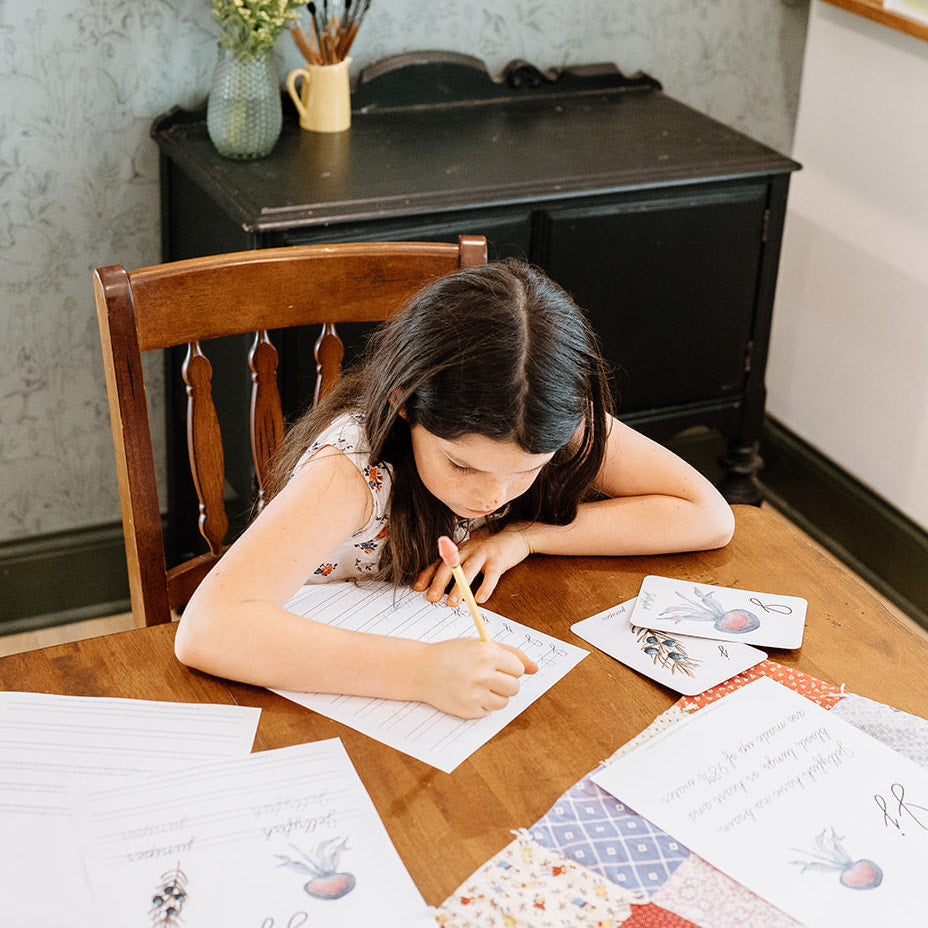
![Sunflower Dissection Activity for Kids [Free Unit Study]](http://treehouseschoolhouse.com/cdn/shop/articles/Copy_of__GTB7688.jpg?v=1714401663&width=1500)

7 comments
Hi Mel! I think the best way to answer this question is by sharing what resources have helped shape our methods and ideas about discipline. We have loved the books Heartfelt Discipline by Clay Clarkson, Creative Correction by Lisa Whelche, and Loving Your Kids on Purpose by Danny Silk.
Hi, great post! It was informative and aligns with many views we have in our household as well. Out of curiosity, what do you practice for “discipline” if your kids choose “not to obey” as stated above. With the younger aged kiddos (5 and under) I’m curious what discipline strategies you have found effective that help aid in following rules thoroughly and promptly. Thanks!
Kaja, we are so happy to hear that you are loving the blogs and information that is provided! You can definitely begin some schooling at 5 if you feel your child is ready. There is no need to rush though if you’d just like to enjoy more of these early-year ideas and activities!
Thank you for all the great information and sharing with us your thoughts and experiences. I saved your blog post in my notes for reference 😊 My son is going to be 5 soon, would he still be considered in the early years or schooling years? I saw you started with your kiddos at age 6.
Thank you 😊
Hello, I don’t speak English but in Spanish I can’t find information about homeschool, thank you very much for creating this blog, with the help of the translator I have been able to read your articles and you don’t know how you have helped me with all your advice, what a great job you do!